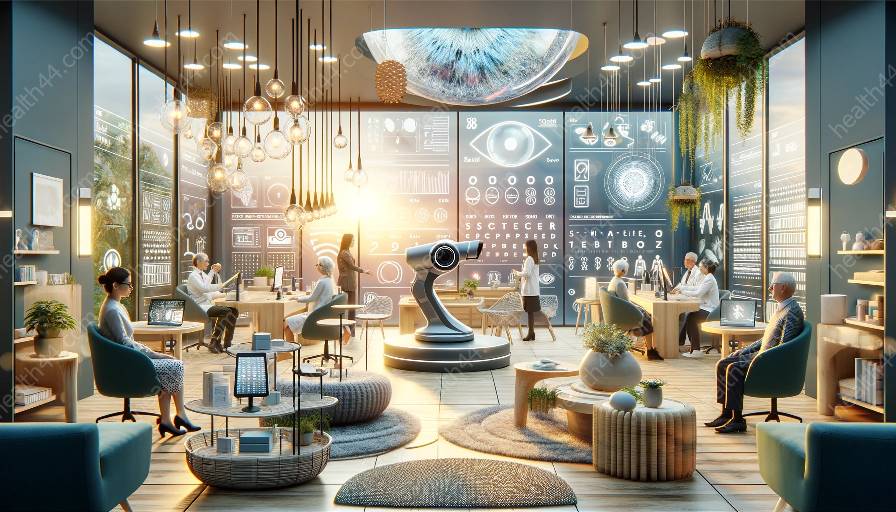Assistive technology plays a crucial role in vision care, especially for individuals with visual impairment. When selecting assistive technology for vision rehabilitation, there are several key considerations to keep in mind. Understanding these factors can help individuals, caregivers, and healthcare professionals make informed decisions to improve the quality of life for people with visual impairments.
Understanding Vision Rehabilitation and Assistive Technology
Vision rehabilitation encompasses a range of services, strategies, and tools designed to help individuals with visual impairments maximize their remaining vision and achieve independence. This may include training in orientation and mobility, activities of daily living, and the use of assistive technology.
Assistive technology refers to devices, tools, and software designed to enhance the functional capabilities of individuals with disabilities. In the context of vision care, assistive technology can help individuals with visual impairments perform daily tasks, access information, and engage in various activities.
Key Considerations for Selecting Assistive Technology
Individual Needs and Preferences
One of the primary considerations when selecting assistive technology for vision care is understanding the individual's specific needs and preferences. Factors such as the level of visual impairment, age, lifestyle, and personal preferences should be taken into account. Some individuals may prefer handheld magnifiers, while others may benefit more from screen magnification software or screen reading devices.
Functionality and Compatibility
Assistive technology should be chosen based on its functionality and compatibility with the individual's daily activities. For example, if the individual needs assistance with reading printed text, a handheld video magnifier or a portable electronic magnifying device may be more suitable. Similarly, for accessing digital content, compatibility with screen readers and other digital accessibility tools is essential.
Usability and Accessibility
The usability and accessibility of the assistive technology are critical considerations. The device or tool should be easy to use and operate, especially for individuals with visual impairments. Features such as large buttons, tactile markers, auditory feedback, and high contrast displays can enhance usability and accessibility for individuals with vision loss.
Training and Support
Effective training and ongoing support are essential for the successful adoption of assistive technology. Healthcare professionals, rehabilitation specialists, and caregivers should provide training on how to use and maintain the selected assistive technology. Additionally, access to technical support and troubleshooting resources can address any potential challenges or issues that may arise.
Cost and Funding
Cost considerations and funding options play a significant role in selecting assistive technology for vision care. It's important to explore various funding sources, such as insurance coverage, government assistance programs, and non-profit organizations that provide financial support for assistive technology. Understanding the cost implications and available funding resources can help individuals and caregivers make informed decisions.
Integration with Other Services
Assistive technology should be integrated with other vision rehabilitation services and support systems. This may include coordination with low vision clinics, orientation and mobility training, occupational therapy, and access to community resources. A holistic approach to vision care ensures that assistive technology complements other interventions and services to maximize functional independence.
Collaborative Decision-Making
Ultimately, the selection of assistive technology for vision care is a collaborative decision-making process involving the individual with visual impairment, their family members, healthcare professionals, and rehabilitation specialists. Open communication, shared decision-making, and regular reassessment of needs are essential components of the selection process.
Conclusion
Choosing the right assistive technology for vision care requires a thoughtful and individualized approach. By considering the key factors such as individual needs, functionality, usability, training, cost, and integration with other services, individuals with visual impairments can benefit from assistive technology that enhances their independence and quality of life. Vision rehabilitation and assistive technology go hand in hand in empowering individuals with visual impairments to lead fulfilling and engaged lives.





















